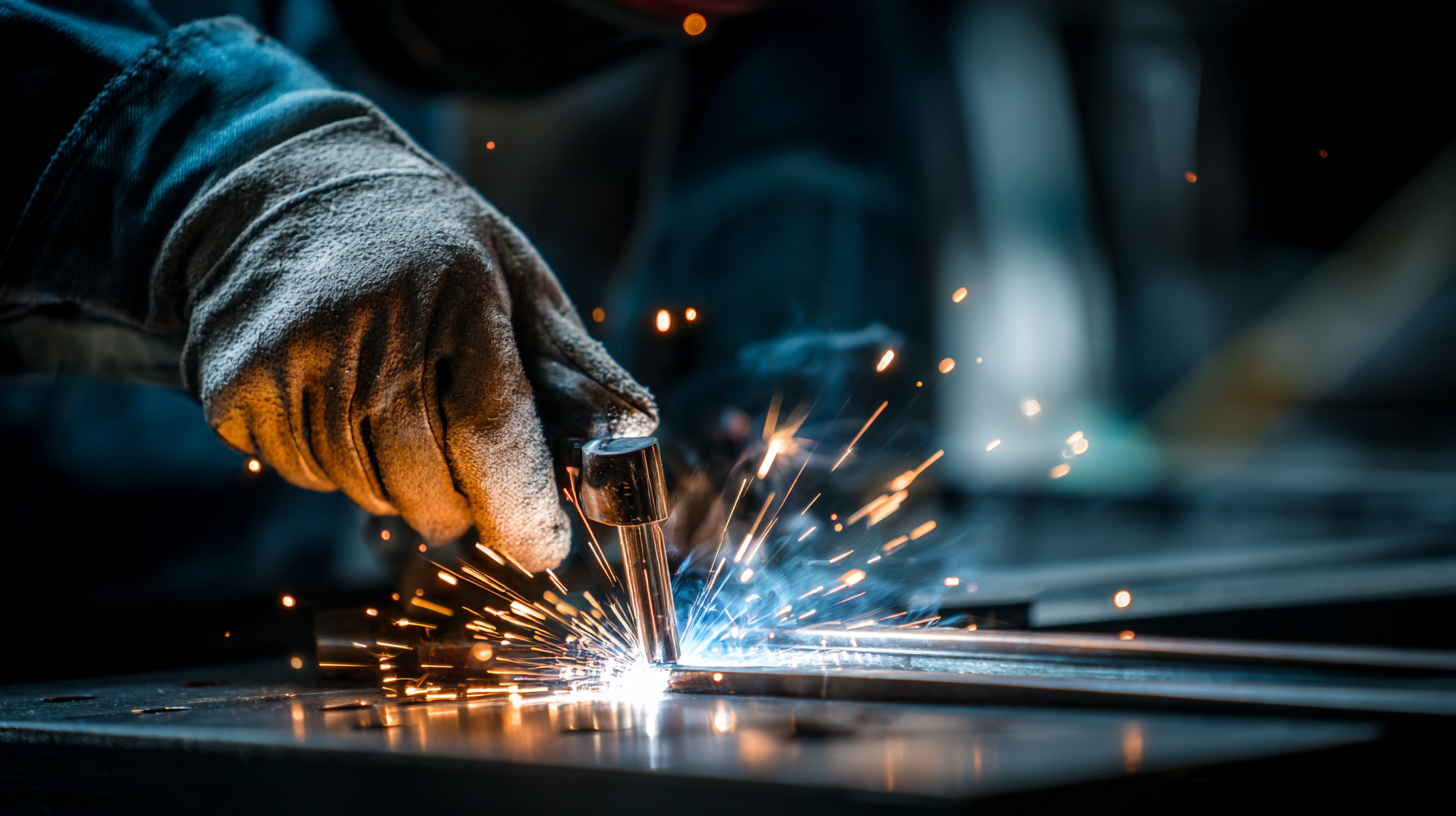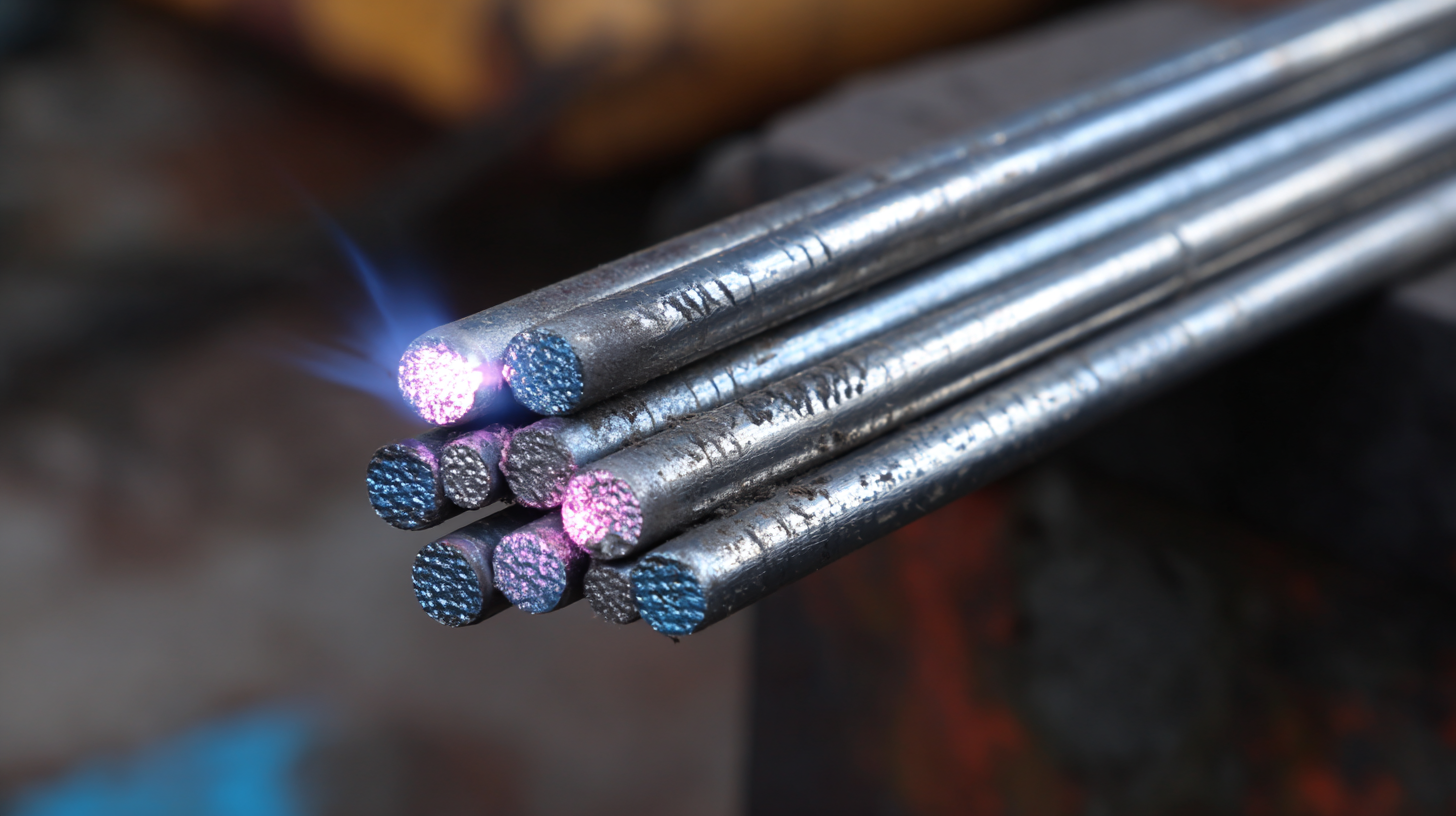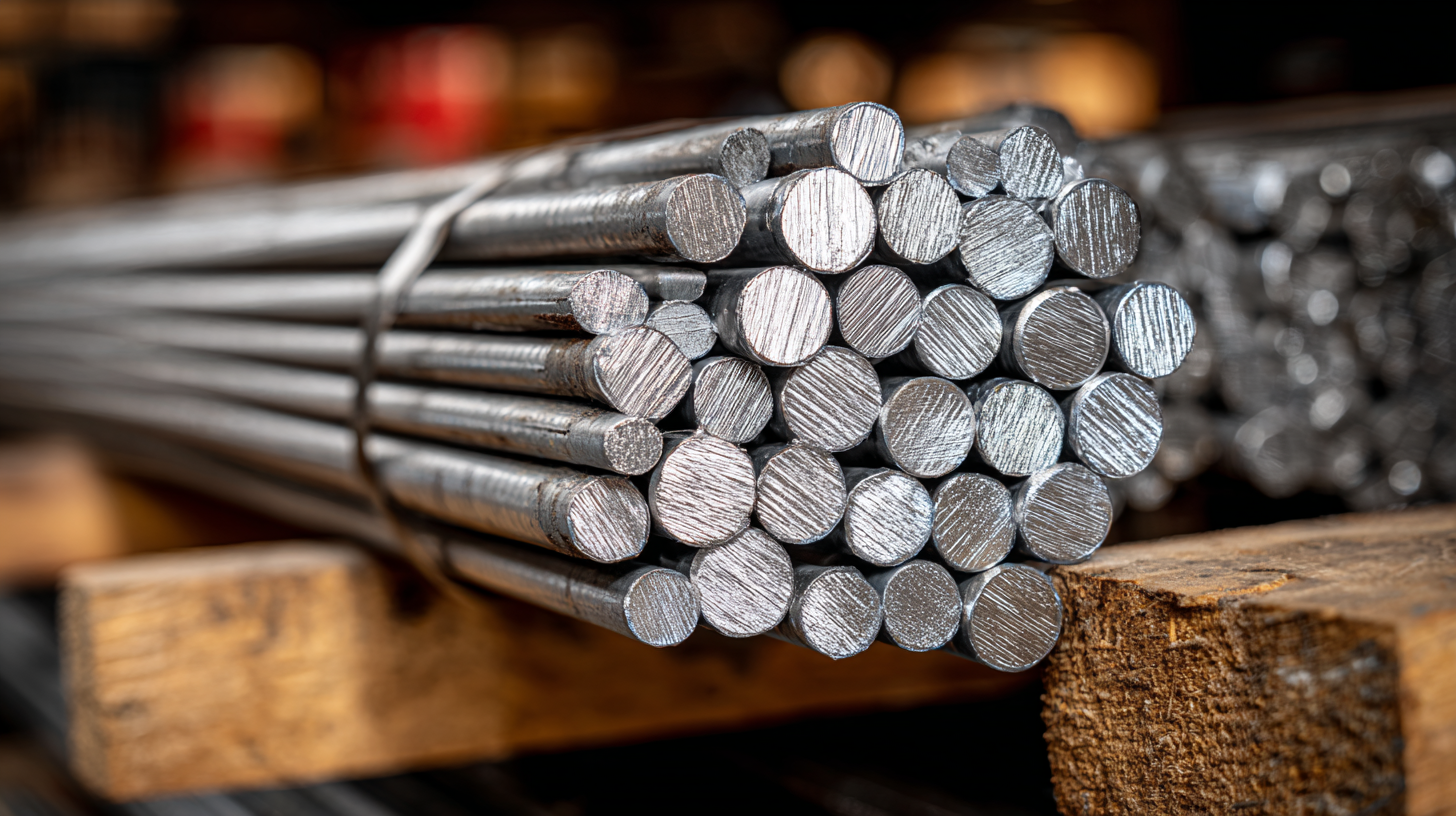Ultimate Comparison of Welding Rod Sizes: Finding the Perfect Fit for Your Projects
Table of Contents
- Understanding Different Types of Welding Rods for Optimal Results
- Key Factors to Consider When Choosing Welding Rod Sizes
- The Impact of Welding Rod Diameter on Your Project's Quality
- Matching Welding Rods to Material Types: A Comprehensive Guide
- Common Mistakes to Avoid When Selecting Welding Rod Sizes
- Tips for Proper Storage and Maintenance of Welding Rods
- FAQS
- Conclusion
- Related Posts
You know, when it comes to welding, picking the right size of welding rod really isn’t something to overlook. The American Welding Society emphasizes that choosing the correct electrode is key if you want solid, strong welds—that’s what keeps everything together, after all. Wenzhou Tianyu Electronic Co., Ltd., with over 22 years under their belt in making top-notch welding electrodes and consumables, totally gets that different projects call for different rod sizes. Whether you're dealing with stainless steel, carbon steel, or low-alloy materials, knowing what’s needed for each job is super important. In this blog, I’ll walk you through a handy comparison of welding rod sizes. My goal? Help you find the perfect match for your projects so you can not only hit those industry standards but also get better, more reliable results every time.

Understanding Different Types of Welding Rods for Optimal Results
 Getting started with welding can be pretty exciting, but it’s super important to understand the different types of welding rods out there. Trust me, choosing the right rods based on the materials and thicknesses you’re working with can really make a difference in how your weld turns out. For example, mild steel rods are your go-to for most general stuff, while stainless steel ones are great if you need something that’s tougher and resistant to rust—think marine projects or high-moisture areas. Each type of rod has its own quirks and qualities, so picking the right one really depends on what you’re trying to achieve—whether it’s strength, appearance, or durability.
Getting started with welding can be pretty exciting, but it’s super important to understand the different types of welding rods out there. Trust me, choosing the right rods based on the materials and thicknesses you’re working with can really make a difference in how your weld turns out. For example, mild steel rods are your go-to for most general stuff, while stainless steel ones are great if you need something that’s tougher and resistant to rust—think marine projects or high-moisture areas. Each type of rod has its own quirks and qualities, so picking the right one really depends on what you’re trying to achieve—whether it’s strength, appearance, or durability.
And don’t forget—size matters too! Usually, thicker, bigger rods are used for heavier, thicker materials because they can generate more heat and fill gaps faster. On the flip side, thinner rods are perfect when you’re working on delicate jobs or lighter materials — they give you more control and precision. Knowing these little details can really help both newbies and seasoned welders make smarter choices, leading to better results and making your welding projects a whole lot easier and more efficient.
Key Factors to Consider When Choosing Welding Rod Sizes
When you're picking the right welding rod sizes for your projects, there are actually a few important things to keep in mind. It's pretty much essential to understand what materials you'll be working with and what kind of applications you're tackling. For example, did you know that the worldwide market for welding rods was valued at around USD 5.66 billion in 2024? And guess what—it's projected to grow to about USD 7.39 billion by 2030! That just goes to show how much demand there is for different welding consumables, tailored to fit all kinds of industry needs. Things like how thick your material is, what position you’re welding in, and how deep you want the weld to penetrate will all influence which rod size and type you should pick.
Also, it’s good to understand the differences between the popular rod types, like 6010, 6011, and 7018. Each one has its own quirks and ideal uses. For instance, the 6010 is awesome for deep penetration and tends to freeze quickly, making it great for certain jobs. On the other hand, the 7018 gives you a smoother finish and tends to produce less spatter, which can make things look cleaner and more professional.
A Few Tips for Picking the Perfect Welding Rod:
1. Think about the material and work conditions—make sure the rod matches the base metal and the environment you're working in.
2. Check the recommended current (amperage) for the rod; different rods perform best at different settings, and that can really affect how your weld turns out.
3. Pay attention to the coating and type of the rod—whether you're doing Stick, MIG, or TIG welding, choosing the right coated rod can make your arc more stable and improve penetration.
The Impact of Welding Rod Diameter on Your Project's Quality
When you're into welding, one thing that honestly makes a big difference is the diameter of the welding rod you're using. Generally, thicker rods tend to produce stronger welds, which is great for heavy-duty stuff like reinforcement or load-bearing joints. But, here’s the thing — if you pick a rod that's too thick for your material, you might end up with way too much heat, warping, or even weaker spots. On the flip side, thinner rods give you more control and finesse. They’re perfect for lighter materials or those delicate jobs where you need that precise touch. Bottom line? Finding the right balance is key to getting good results.
A good rule of thumb is to match your rod size with how thick your base material is. For example, if you’re welding a thin sheet of metal, sticking to something like a 1/16-inch rod usually does the trick better than a 1/8-inch one. Also, think about the welding position — doing overhead work? Smaller rods tend to be easier to control and help avoid drips.
Honestly, the best way to get comfortable is to experiment a bit. Keep a variety of rods in different sizes around — you’ll start noticing what works best for different materials and projects. Trying things out hands-on really helps you learn and improve. Over time, you’ll find your groove, and your welds will keep getting better and more consistent.
Matching Welding Rods to Material Types: A Comprehensive Guide
When you're picking out the right welding rod for your projects, it’s pretty important to really understand what materials you’re working with. Each type of metal needs a specific kind of rod to make sure your joints come out strong and last a long time. For example, if you’re welding carbon steels, E7018 rods are usually a good bet—they’ve got a high iron powder content, which helps. The American Welding Society (AWS) actually recommends these because they make the welds super workable and give you mechanical properties that hold up well—perfect for things like structural work.
Now, if you’re dealing with stainless steel, you’ll want to go with E308L rods. They have low carbon, which is a big deal because it helps prevent carbide precipitation during welding, and that’s key for avoiding corrosion. I read somewhere that the International Institute of Welding (IIW) pointed out using the right rod can really cut down on corrosion issues in stainless steel joints—that’s pretty important, right?
And for aluminum? ER4047 rods are usually the way to go. They contain silicon, which helps the weld flow better and cuts down on porosity, making the overall weld much better. Basically, knowing what’s right for each material is a big part of making sure your project turns out just right. Trust me, taking the time to pick the right rod makes all the difference in the world when you’re welding anything serious.

Common Mistakes to Avoid When Selecting Welding Rod Sizes
Picking the right size of welding rod is super important if you wanna get strong, high-quality welds. But honestly, a lotta welders make some common mistakes that can really mess things up—causing delays or even weaker stuff in the long run. According to the American Welding Society, about 30% of weld failures are tied back to choosing the wrong rod size. Most times, it’s because people don’t pay attention to how the rod diameter lines up with how thick the material is. For example, using a rod that's too thin often leads to poor penetration, and if you go too thick, you might end up warping or even burning through your material. Major bummer, right?
Another thing folks sometimes forget is to think about the welding process they’re using. Like, if you’re doing Gas Tungsten Arc Welding (GTAW), you’ll want to go with smaller diameter rods, whereas Shielded Metal Arc Welding (SMAW) can handle bigger ones. Sticking to the right rod size for the specific method not only makes your welds look better but also speeds things up. Plus, it’s a good idea to double-check the Material Specification Standards (MSS) to make sure your rod and the base material play nicely together—this helps avoid contamination and keeps your weld solid as heck.
Tips for Proper Storage and Maintenance of Welding Rods
When you're dealing with welding rods, keeping them stored and maintained properly is a big deal. Trust me, after 22 years in the game, I’ve learned that if you don’t store your electrodes right, they can lose a good 20-30% of their usability — all because of moisture getting in, which can cause some pretty tricky welding defects. At Wenzhou Tianyu Electronic Co., Ltd., we know how important it is to keep quality stainless steel and carbon steel welding electrodes in top shape. Honestly, a clean, dry environment is the secret sauce for making sure your materials stay effective so you can get the best results every time.
A quick tip: always store your electrodes in airtight containers—this helps keep out the humidity. And if you can, keep them in their original packaging until you're ready to use them. It’s just an extra layer of protection against dirt and moisture. Make a habit of inspecting your stored rods now and then—check for rust or damp spots—and organize everything by type and size. Trust me, taking a little time to organize can save you a headache later and make your work a lot smoother — always have the right electrodes ready to go.
Oh, and don’t forget to check those expiration dates! Most electrodes only last so long, and using expired ones can really mess up the quality of your welds. Stick to these simple storage and upkeep tips, and you’ll notice your welding rods perform way better — setting you up for success on every project.
FAQS
: Different types of welding rods include mild steel rods for general purposes and stainless steel rods for enhanced durability and corrosion resistance, especially in marine or high-moisture environments.
Thicker rods create stronger welds suitable for heavy-duty applications, while thinner rods offer precision for lighter materials. Choosing the right diameter is essential for optimal results.
For welding thin sheets of metal, a 1/16-inch rod might be more appropriate than a thicker 1/8-inch rod, as it prevents excessive heat and warping.
Each rod type is tailored to produce varied strengths and appearances in the weld bead, making the selection based on the intended application critical for achieving desired results.
The type of welding position can affect control and precision; for example, overhead welding often requires smaller rods to minimize drip and maintain better control.
Yes, experimenting with different rod sizes allows welders to understand their impact on work, enhancing skills and leading to higher-quality welds.
Yes, stainless steel rods are ideal for marine applications due to their enhanced durability and corrosion resistance.
Beginners should learn to match the rod diameter to the thickness of the base material, as it is crucial for welding effectiveness and project quality.
Using a rod that's too thick can cause excessive heat and structural weaknesses, while using one that's too thin may not provide adequate strength for the weld.
Keeping a selection of rods in various diameters can help welders find the best match for their specific materials and project requirements.
Conclusion
If you’re serious about getting the best possible welds, understanding welding rod sizes is a pretty big deal. There’s a lot of different rods out there, each suited for different jobs, and choosing the right size can really make a difference in how your project turns out. When you're figuring out which welding rod size to go for, think about a few key things—like what material you’re working with, the rod’s diameter, and what your specific project needs are.
One common mistake people make is forgetting how crucial it is to match your welding rods with the materials you're working on. Plus, don’t overlook the importance of storing your rods properly and keeping up with maintenance. We’ve been in the game for over 22 years, providing top-quality welding electrodes and consumables here at Wenzhou Tianyu Electronic Co., Ltd. and we always stress that picking the right welding rod size isn’t just about technical precision—it’s about making sure your welds last and perform well over time.
Related Posts
-

Future Trends in Best Welding Rod Size for Global Buyers How to Navigate the 2025 Market Analysis
-

Exploring Innovations and Alternatives in Best Hard Surface Welding Rods for 2025 Global Market Trends
-

Exploring 2025 Innovations in Best Wear-Resistant Welding Rods and Alternative Solutions for Global Buyers
-

2025 Welding Innovations: The Top 5 Best Rods to Elevate Your Projects
-

Understanding Common Challenges with Best Smaw Electrode for Global Buyers
-

Envisioning Tomorrow: The Evolution of Welding Wire Technology
Blog Tags:

